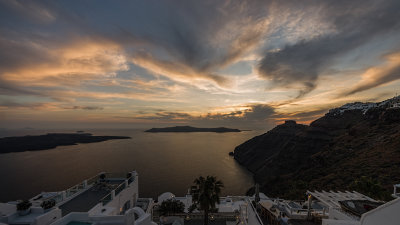Howdy,
I'm not a total newbie, but still have a lot to learn. I know I have too much camera/lens for my purposes, but bear with me. I'm trying to understand why it's so difficult to take a sharp portrait (and landscape) picture where I don't want the background to be blurred. I thought that the way to accomplish this would be to max out the focal length of my zoom lens, but I'm finding that even at the max focal length, I can't get both the near object and far away scenery to be nice and sharp. Whereas my iPhone seems to do that all the time by default. Is it a limitation of the lens I am using, or am I doing something wrong?
For the 2 photos attached, I'm using a Canon 5DmkIV with a 24-70mm 2.8L II USM lens. The one with the woman in profile is zoomed out at 30mm, 1/60sec, f/22. The other with just the landscape is at 24mm, 1/30sec, f/22. As you can see, the near elements (the woman, the railing) is relatively sharp, but the Golden Gate bridge and SF cityscape is fairly unfocused. I'd like to be able to take a photo where everything on the photo is nice and sharp. Any hints would be appreciated. Thanks in advance.
I'm not a total newbie, but still have a lot to learn. I know I have too much camera/lens for my purposes, but bear with me. I'm trying to understand why it's so difficult to take a sharp portrait (and landscape) picture where I don't want the background to be blurred. I thought that the way to accomplish this would be to max out the focal length of my zoom lens, but I'm finding that even at the max focal length, I can't get both the near object and far away scenery to be nice and sharp. Whereas my iPhone seems to do that all the time by default. Is it a limitation of the lens I am using, or am I doing something wrong?
For the 2 photos attached, I'm using a Canon 5DmkIV with a 24-70mm 2.8L II USM lens. The one with the woman in profile is zoomed out at 30mm, 1/60sec, f/22. The other with just the landscape is at 24mm, 1/30sec, f/22. As you can see, the near elements (the woman, the railing) is relatively sharp, but the Golden Gate bridge and SF cityscape is fairly unfocused. I'd like to be able to take a photo where everything on the photo is nice and sharp. Any hints would be appreciated. Thanks in advance.







